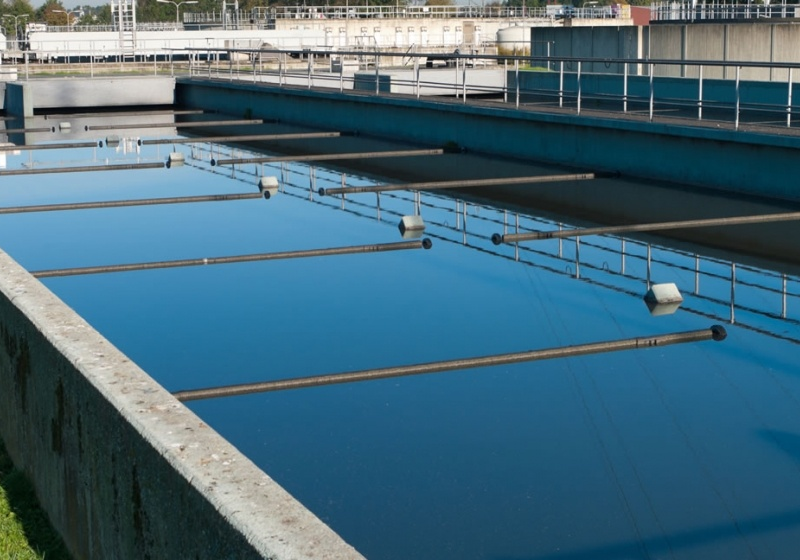Aerobic Treatment in Food Industry Wastewater
Food industry wastewater mainly comes from food production processes such as raw material treatment, washing, dehydration, filtration, various separation and refining, deacidification, deodorization, and cooking.
Wastewater contains a large amount of protein, organic acids, and carbohydrates. Due to the presence of many plankton, dissolved organic matter in water increases rapidly, easily producing humus and accompanied by unpleasant gases. At the same time, the content of copper, lead, manganese, chromium and other metal ions in the sewage is high, and the bacterial and coliform groups also exceed the discharge standards.
According to the characteristics of wastewater quality,biological treatment is generally recommended after the pre-treatment of food industry wastewater.
Introduction of common biological treatment
1.Biological Filter
The biological filter method that allows wastewater to flow down from a filter made of crushed stone, plastic, etc. and come into contact with a thin layer of biofilm on the surface of the filter material.
Advantages: It has simple structure, small floor area, low maintenance costs, and strong adaptability to changes in water quality and quantity.
Disadvantages: The treatment depth is not as deep as that of the activated sludge method, and there are still some residual organic substances that need further treatment
2.Activated Sludge
Also known as biochemical aeration method, is the most important method in aerobic treatment.
Activated sludge is a type of flocculent sludge that can adsorb and agglomerate organic and other substances in sewage, and oxidize and decompose organic substances by forming aerobic microorganisms in activated sludge.The microorganisms in activated sludge are a group composed of a variety of microorganisms, mainly bacteria, followed by mold and yeast, as well as protozoa and invertebrates.
The activated sludge treatment system mainly consists of a primary sedimentation tank, an aeration tank, aeration equipment, sludge reflux equipment, and a secondary sedimentation tank.
3.Oxidation Pond
A natural or artificial pond that utilizes microorganisms and algae naturally present in water for aerobic and anaerobic biological treatment of wastewater.
4.Biological Rpary
The biological rotary table process is one of the biological treatment technologies for wastewater using the biofilm method, which is an artificial enhancement of sewage irrigation and land treatment. This treatment method enables microorganisms such as bacteria and fungi, as well as micro animals such as protozoa, to grow and breed on the biological rotary table filler carrier, forming a membrane like biological sludge - biofilm. After primary treatment in a sedimentation tank, the sewage comes into contact with a biofilm, and the microorganisms on the biofilm absorb organic pollutants in the sewage as nutrients to purify the sewage.
In a pneumatic biological rotary table, dissolved oxygen required for microbial metabolism is supplied through an aeration pipe located under the biological rotary table. The surface of the rotary table is covered with an air hood. The compressed air released from the aeration pipe drives the air hood to rotate the rotary table. When the rotary table leaves the sewage, a thin layer of water forms on the surface of the rotary table, and the water layer also absorbs dissolved oxygen from the air.
The biological rotary table is composed of a number of lightly corroded plates arranged closely at equal distances and connected in series by a central horizontal axis. During operation, the lower part is immersed in a semicircular shape containing sewage, and the upper part is exposed to the air. It is driven by a motor and slowly rotated, and BOD is removed by the microbial film formed on the surface of the circular plate.
Characteristics of processing technology
- Strong adaptability to changes in water quality and quantityEasy to solid-liquid separation, even if a large number of filamentous bacteria are generated, there is no sludge floating phenomenon in the secondary sedimentation tank
- Able to treat low concentration wastewater
- Low power cost
- Less sludge generated
- Good nitrification and denitrification functions
- Simple driving device
Visit www.evuchina.com for more informations!

#QDEVU #WATERTREATMENT #WASTEWATERTREATMENT #SEWAGETREATMENT #SEWAGEWATERTREATMENT #WATERFILTER #WATERFILTRATION #SLUDGETREATMENT #SLUDGEDEWATERING


